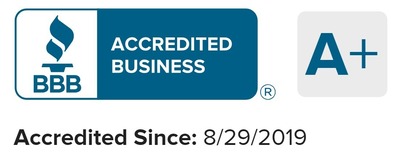Are you looking to diversify your real estate portfolio and earn steady rental income each month? Becoming a Section 8 landlord could be the right choice for you. The Section 8 Housing Choice Voucher Program provides rental assistance to low-income families, the elderly, and the disabled. As a Section 8 landlord, you’ll have dependable tenants paying rent on time each month with the help of government subsidies.
In this article, I’ll walk you through the entire process of becoming a successful Section 8 landlord accepting Section 8 tenants.
First, let me explain what a Section 8 landlord is.
What is a Section 8 Landlord?
A Section 8 landlord is a property owner who has agreed to rent to tenants participating in the Section 8 program, officially known as the Housing Choice Voucher Program or subsidized housing. This program is administered by the U.S. Department of Housing and Urban Development (HUD). It seeks to provide decent, safe, and sanitary housing in the private sector for low-income families and individuals.
In the Section 8 program, tenants pay a portion of their income for rent, and the government pays the rest directly to their landlord’s bank account. The portion paid by the tenant is around 30% of their adjusted gross income, and the voucher covers the rest up to a certain limit, which is determined by the local Public Housing Authority (PHA) based on fair market rents for the area. However, the Housing Assistance Payments Contract is a crucial document signed after the lease agreement is finalized. This contract ensures that landlords receive Section 8 subsidies directly and obligates them to maintain the property’s condition at a fair rental rate.
Is the Housing Choice Voucher Program Right For You?
Whether the Section 8 Housing Program is right for you depends on your individual circumstances, including your financial goals, tolerance for administrative processes, and the rental market in your area. If you value a steady income and are willing to navigate the regulatory requirements, Section 8 can be rewarding. On the other hand, if you prefer more flexibility in setting rents and choosing tenants without government involvement, it might not be the best fit.
It’s also important to research and understand the specific requirements and conditions of the Section 8 housing choice voucher program in your local area, as these can vary. Speaking with other Section 8 landlords and consulting with your local PHA can provide valuable insights into whether participating in the program aligns with your investment strategy and personal preferences.
Let’s talk about it in detail in the next headings.
What are the Pros and Cons of Section 8 Tenancy?

No program is perfect, so it’s important to weigh the pros and cons as you evaluate becoming a Section 8 landlord:
Pros of Section 8 Tenancy:
- Guaranteed Rental Income: Your rent payment is secured by the government through direct rent subsidy. Late or non-payment is rare.
- Minimal Tenant Screening: Applicants are pre-qualified by income eligibility and background screenings through the PHA.
- Long-Term Tenants: Stable rents encourage tenants to stay, keeping units filled and turnover costs low.
- Helps those in Need: Participating provides affordable housing to low-income families, the elderly, and disabled populations.
Cons of Section 8 Tenancy:
- Administrative Red Tape: Proper paperwork, inspections, and process compliance require additional landlord responsibilities.
- Difficult Tenants Possible: A small percentage of tenants may cause issues like damages or non-compliance despite protections.
- Rental Increases Capped: Maximum rent amounts and annual increases are limited compared to market rate units.
- Perceived Stigma: Some landlords believe Section 8 tenants may have more property damage, noise complaints, or criminal issues than market tenants.
Recommended to read Section 8 Housing OKC to know if you are eligible to rent out your property.
What are Eligibility Requirements to Become a Section 8 Landlord?
Now that you understand the pros and cons of Section 8 tenancy and are wondering if you want to dive in, here are the most common requirements to participate as a Section 8 landlord:

- Property Requirements: Your rental units must meet HUD’s (Housing and Urban Development) and Housing Quality Standards (HQS). This ensures safe and sanitary housing. All units must pass an HQS inspection performed by the PHA before approval. Be prepared to make any necessary repairs.
- Rental Agreement and Lease: Use the PHA’s standard lease agreement between you and the tenant. Leases are for a minimum of one year and are automatically renewable. All lease terms must comply with regulations.
- Housing Assistance Payments Contract: This contract is signed after the lease agreement is finalized and ensures landlords receive Section 8 subsidies directly.
- Rent Amount: Rent charged for Section 8 units must be reasonable compared to similar unassisted units in your area. Public Housing Agencies set payment standard limits as a percentage of fair market rent each year.
- Owner Responsibilities: You have standard responsibilities of maintaining the unit and grounds according to the lease. You must also comply with equal opportunity and fair housing laws. Cooperate with the Local Public Housing Authority (PHA) regarding inspections, rent adjustments, and tenant issues. For a comprehensive breakdown of your ongoing obligations as a Section 8 landlord (repairs, screening, eviction protocols, inspection readiness, and more), see our detailed guide on Section 8 Housing Landlord Responsibilities.
- Property Location: Properties must be located in the PHA’s jurisdiction, usually within the same county or metropolitan area. Check with your local PHA office for eligibility for specific locations.
- Non-Discrimination Policy: Do not deny tenancy to Section 8 holders due to the source of their rent payments. You must rent to voucher holders without regard to race, color, religion, sex, national origin, familial status or disability.
- Tax Identification Number: You will need a Tax Identification Number (Social Security Number or EIN) for payment processing purposes. Rental assistance payments are reported as program income on owners’ annual tax returns.
- Landlord Credentials Check: Be prepared for the PHA to verify ownership and conduct a management/landlord check of your qualifications. You may have to provide tax returns, ownership records, or other documentation.
How to Apply and Get Approved as a Section 8 Landlord?
You’ve determined Section 8 works for your situation, so it’s time to officially apply. The application takes some effort upfront but opens doors to long-term housing assistance contracts. Here are the steps to officially become a Section 8 landlord:

- Contact Your Local Housing Authority
Find contact details for the Public Housing Authority (PHA) that oversees the Section 8 program where your property is located. They can answer questions, provide application forms/checklists, and advise on Property Eligibility and inspection criteria for your unit(s). - Complete Rental Property Forms and Inspection Checklist
The PHA will need detailed information on your rental property and unit(s) including address, number of bedrooms/bathrooms, rent amount, etc. Review inspection standards to prepare for the initial and annual checkups. - Schedule and Pass the Initial Property Inspection
Arranging an appointment for inspection once forms are submitted. Minor fixes may be allowed, but units must meet all health, safety and quality standards to approve a contract. - Sign the Housing Assistance Payments (HAP) Contract
Legal agreement specifying landlord and PHA responsibilities, rental amounts, and lease terms for each Section 8 tenant placed at your property going forward. - Obtain a Certificate of Rent Reasonableness
The PHA verifies market rents for comparable non-subsidized units in your area to ensure Section 8 rents are appropriate. Rates can be re-evaluated annually. - Congratulations, You’re Set Up to Accept Section 8 Tenants!
Now you’re eligible to be referred to Section 8 renters searching through the PHA housing portal and can work directly with tenants on screening and lease agreements.
How to Find & Screen Section 8 Tenants?
You’ve completed the landlord registration process, and it’s time to welcome Section 8 tenants to your available units. Here are some best practices for filling vacancies:

- Post Rental Listings on the Local Housing Authority Website
Public Housing Agencies maintain housing search databases for voucher holders seeking landlords. Include all relevant details on unit features, pricing structure with subsidies included, and your landlord profile to attract qualified applicants. - Screen Thoroughly Using Standard Rental Application Forms
Treat Section 8 applicants like any other tenant but ask supplemental questions relevant to the program. Check references, landlord history, income verification, background/credit thoroughly. The goal is long-term successful tenancy for all parties. - Evaluate Candidates Holistically Beyond Financial Qualifications
Section 8 standards ensure minimum finances but shouldn’t preclude well-qualified renters with mitigating life factors. Consider full tenant profiles and screening cooperatively with housing specialists when possible. - Explain Rental Terms Clearly Upfront
Review HAP contract responsibilities, security deposit rules, lease terms, portability options, family obligations, ongoing inspections, etc. Transparency builds understanding and compliance on both sides. - Require Approved Lease Agreement Signed by All Parties
Use a standard template addressing basic lease policies plus rules specific to Section 8 like the Right to Remain clause protecting tenants in good standing. Keep proper paperwork on file.
How to Maintain Success with Section 8 Tenants?

With tenants chosen and leases signed, it’s time to implement owner responsibilities that sustain positive outcomes long-term:
- Make Timely Requests for Annual or Interim Inspections
Set inspection reminders to stay ahead of deadlines. Work with tenants beforehand to address minor issues that could jeopardize standing. Inspections approve continued occupancy and subsidies. - Collect Correct Rent Amounts Each Month and Issue Receipts
Stay organized with tenant rent obligations and changes communicated by the PHA. Accept payments promptly, issue receipts and address delinquencies according to lease provisions and Fair Housing laws. - Address Maintenance Issues Quickly and Professionally
Meet regular repair duties outlined in HAP contracts and housing standards. Communicate respectfully with tenants about access, disruptions and resolution timelines when work is needed. - Refrain from Discriminating Against or Harassing Tenants
Section 8 prohibits landlord bias in screening, rent collection or services based on factors like race, disability status or family size. Promote courteous, lawful conduct and full housing choice for tenants. - Maintain Positive Working Relationship with PHA Staff
Promptly respond to inquiries, complete required owner reports and notify staff of major life changes or lease terminations. Proactive coordination resolves issues smoothly. With tenants secured and processes optimized, ongoing cooperation creates long-term housing security for all. Keeping units in quality condition and treating renters fairly makes the Section 8 landlord experience hassle-free and productive for years to come.
What are the Common Challenges and How to Overcome Them?
No landlord-tenant dynamic is without hiccups occasionally. Here are a few potential issues Section 8 landlords may face and best ways to handle them:

- Vacancy Loss Due to Inspection Failures
When units fail Section 8 inspections, they may sit vacant until the required repairs are completed, resulting in lost rental income. Proactive maintenance and timely fixes before re-inspections can help prevent this issue. Maintaining clear repair records and staying ahead of Section 8 inspection requirements reduces the risk of delays and keeps your property earning consistently. - Rent Collection Delays from PHA Payment Issues
Income security starts with collecting the full monthly rent amount on schedule. Promptly address late payments with the PHA using proper channels and documentation. - Tenant Damage or Lease Violations
Enforce lease provisions fairly while keeping tenants informed and helped to comply versus punitive measures that could end assistance prematurely. Seek mediation first when reasonable. If there’s still no response from the tenant on these, you can apply for Section 8 eviction. - Conflicts Over Housing Quality Standard Interpretations
Clarify any maintenance duty uncertainties proactively with PHA inspectors to avoid “failures” due to different understandings. Request joint inspections when needed. - Program Rule Changes Impacting Existing Contracts
HUD may modify requirements periodically. Stay up-to-date through owner listservs and work cooperatively during transition periods to minimize disruption for tenants and your business.
Resources for Becoming a Section 8 Landlord
Local Housing Authorities
It would be best if you connect with your local housing authorities, which can provide essential resources and support. For example, in Oklahoma, there is an Oklahoma City Housing Authority and the U.S. Department of Housing and Urban Development. These agencies offer guidance on program regulations, property inspections, and tenant selection. Contact information for local offices is generally available on their websites.
Online Forums and Support Groups
You can also engage with online communities, which can be highly beneficial for becoming a Section 8 landlord. Forums and social media groups allow you to share experiences, ask questions, and exchange advice with peers who understand the unique challenges and rewards of renting to Section 8 tenants.
Educational Materials and Workshops
You can enhance your knowledge through various educational resources, including workshops and seminars focused on Section 8 housing. Many housing authorities and nonprofit organizations offer training sessions that cover topics from compliance to tenant relations, helping landlords navigate the program more effectively.
Getting Started as a Section 8 Housing Landlord
If being a Section 8 landlord fits your rental property investment plans, start the registration process for accepting Section 8 tenants. This will allow you to enjoy a steady stream of rental revenue and qualified renters while still providing you with control over aspects like screening and rents. Carefully reviewing the program requirements upfront and maintaining open communication with tenants and the PHA can help ensure a positive experience for landlords.
FAQs About Being a Section 8 Landlord
Can I refuse a Section 8 tenant if I don't like them?
No, as a participating Section 8 landlord you cannot deny an applicant solely because they have a Section 8 voucher. However, you can reject applicants for the same reasons allowed under the Fair Housing Act such as poor credit, former evictions, or criminal records. Make sure to apply screening criteria evenly.
How does rent collection work with Section 8 tenants?
As a Section 8 landlord, you will receive a Housing Assistance Payment (HAP) directly from the local housing authority each month that covers part of the tenant's rent. The tenant pays the remaining portion. This steady rental income can help offset risks associated with other tenants.
Do I have to make any repairs or improvements to accept Section 8 tenants?
While your property must meet basic housing quality standards to qualify, you are not required to renovate or make significant repairs upfront. The program aims to expand affordable housing options without overburdening landlords. Ongoing maintenance is still your responsibility.
Will Section 8 tenants take better care of my property?
Studies show Section 8 tenants are no more likely than others to damage property or violate leases. However, regular property inspections and the threat of losing benefits provide incentives for tenants to pay rent on time and avoid costly behavior. Ultimately, tenant screening and lease enforcement are the best ways to protect your investment.
Can I screen tenants thoroughly?
Yes, you can screen tenants for current income, rental history, credit, criminal background, etc., using the same criteria as other tenants. The PHA’s approval does not replace your screening process. However, do not automatically deny a voucher holder due to having rental assistance.
What are the income limits for Section 8 tenants?
Income limits for Section 8 tenants are determined by the U.S. Department of Housing and Urban Development (HUD) and vary based on location and household size. Generally, these limits are set at a percentage of the area median income (AMI):
- Very Low-Income: Mainly 50% of the AMI.
- Extremely Low-Income: Usually 30% of the AMI.
HUD updates these limits annually, and local housing authorities can have their own specific thresholds. It's best to consult the local housing authority or the HUD website to find the exact income limits for a particular area.
What happens if a section 8 tenant violates the lease?
If a Section 8 tenant violates the lease, you can take several steps:
1. You can review the lease agreement.
2. You can document the violation.
3. You can communicate with the tenant.
4. Send the notice of lease violation.
5. You can notify the local housing authority.
6. You can initiate eviction proceedings if the violation remains unaddressed.
7. At last you need to avoid retaliatory actions to prevent legal complications.
What are the steps to become a Section 8 landlord?
Here are the steps to become a Section 8 landlord:
1. Research the program or Understand the Section 8 Housing Choice Voucher Program.
2. Contact the Local Housing Authority
3. Complete the Application
4. Prepare your Property
5. Schedule for an Inspection
6. Sign a Lease Agreement
7. Submit the Housing Assistance Payment Contract (HUD Form 52641)
8. Rent to Section 8 Tenants
9. Receive Payments
10. Maintain Compliance
11. Renew Contracts and Inspections

Author
Scott Nachatilo is an investor, property manager and owner of OKC Home Realty Services – one of the best property management companies in Oklahoma City. His mission is to help landlords and real estate investors to manage their property in Oklahoma.
 (
(









